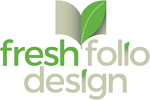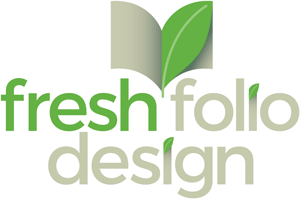The basis of every project you put together is your document. While it’s not too overwhelming, as we start to share what we know about InDesign, it’s helpful to take it back to the bare basics to make sure we’re all on the same page.
Today, we’re going to take a quick look at Document Setup and the different options available to you when setting up a file for a print job.
When you select File>New>Document or Cmd-N (Ctrl-N for PCs), it brings up the New Document dialog box, which looks like this:

The key parts of this to pay attention to are the Preset options across the top of the page, which include any Recent documents you’ve created, Saved document settings, and then the standard preset options (Print, Web, and Mobile). Each of these standard presets have some basic Blank Document Presets, as well as a number of Templates (that I have never had the urge or curiosity to use — Call me a DIY guy).
For now we are going to focus on the Print standard preset (A) and select the first Blank Document Preset (B), which is Letter (the one with the blue line around it in the image above). Just for fun, try clicking through the different Blank Document Presets and you will see the Width and Height values in the Preset Details (C) change appropriately. We are going to select the Letter option for the remainder of this section.
Now that we have selected the document size that we want to use, let’s quickly move through all of the Preset Detail Options (C) that you have. FYI — any of these options can be changed after you have created the document, so have no fear. Except for scorpions and ticks, definitely fear those.
Here’s a breakdown of the Detail options:
 (1) Width/Height — placing a value in either of these fields change the… well, width and height of your document.
(1) Width/Height — placing a value in either of these fields change the… well, width and height of your document.
Units — if for some reason you either prefer Agates or Picas, then more power to you. I’d recommend using inches, or centimeters for that European flavor.
Orientation — this allows you to use either portrait (tall) or landscape (wide) orientation for your document. Choose wisely.
 (2) Pages — if you know the number of pages that you need for your document, you can select it here. If not, don’t worry, you can always add more pages later.
(2) Pages — if you know the number of pages that you need for your document, you can select it here. If not, don’t worry, you can always add more pages later.
Facing Pages — If you are creating any kind of 4 page (or more) booklet, this will create the pages on opposite sides of the “fold”. Unless you are creating something with folded pages, just deselect this box.
Start # — This would be used if you have a multi-section, multi-file book project. If that confused you, then trust me, this doesn’t hold any interest for you at this point. This simply let’s you set the page number for the first page of your document.
Primary Text Frame — if you want InDesign to create a text box for you as part of the document setup, you can select this box. If you are in a crazy kind of mood, leave it unchecked and you can create your own text box!
 (3) Columns — if your project is going to require multiple columns of text, then you can set that up here. In my opinion, it’s rare that you would really know that at this point, but never say never…
(3) Columns — if your project is going to require multiple columns of text, then you can set that up here. In my opinion, it’s rare that you would really know that at this point, but never say never…
Column Gutter — This pertains to the amount of space between your columns. Again, if you already know that kind of specific detail at this point, you’re a far better person than I am. I stand in awe.
 (4) Margins — These four fields are all part of the same function. Using these fields you can set a pink/purple guideline at that distance from the edge of the page. Special Fun Fact: if you deselect the little chain link to the right of the fields, you can set different amounts for each margin. If you leave it selected, it will lock all four fields together with the same value in each. Extra Special Fun Fact: If you have the Primary Text Frame (2) selected, the text box created will exactly fit within those margin settings.
(4) Margins — These four fields are all part of the same function. Using these fields you can set a pink/purple guideline at that distance from the edge of the page. Special Fun Fact: if you deselect the little chain link to the right of the fields, you can set different amounts for each margin. If you leave it selected, it will lock all four fields together with the same value in each. Extra Special Fun Fact: If you have the Primary Text Frame (2) selected, the text box created will exactly fit within those margin settings.
 (5) Bleed — if you have a document that needs to print right up to the edge of the page (and a printer that can handle it), this sets an orange marker outside the page boundary to indicate how far your image needs to extend. This allows the printer enough excess outside the edge of the page to trim the page to the correct dimension.
(5) Bleed — if you have a document that needs to print right up to the edge of the page (and a printer that can handle it), this sets an orange marker outside the page boundary to indicate how far your image needs to extend. This allows the printer enough excess outside the edge of the page to trim the page to the correct dimension.
 (6) Slug — You will never, never use this. This is really for printer use only. This is used to provide an area for notes related to the trimming of the page (for example, identifying a perforation line on the output). They don’t ask for much, give them this.
(6) Slug — You will never, never use this. This is really for printer use only. This is used to provide an area for notes related to the trimming of the page (for example, identifying a perforation line on the output). They don’t ask for much, give them this.
Incidentally, Bleed and Slug sounds just a bit like a 1950’s cartoon crime-fighting team, but regrettably, it’s not.
 (7) The final section of the Preset Details segment of the window is the Close/Create section. This is where you can either toss out all of the work that you just did to set this up or actually create the document you’ve been picturing in your head. That being said, you’ll notice that there is a preview box to the left of the Close/Create buttons. If you click that box, it will show you a preview of the document that you’re setting up and allow you to make real-time changes prior to clicking on the Create button.
(7) The final section of the Preset Details segment of the window is the Close/Create section. This is where you can either toss out all of the work that you just did to set this up or actually create the document you’ve been picturing in your head. That being said, you’ll notice that there is a preview box to the left of the Close/Create buttons. If you click that box, it will show you a preview of the document that you’re setting up and allow you to make real-time changes prior to clicking on the Create button.
One last tidbit — if the document you’ve created differs significantly from any of the existing presets, you can click the little “File box” icon at the top right of the Preset Details and save your selections as a saved template. It shouldn’t be necessary very often, but it’s better to know-it-and-not-need-it than need-it-and-not-know-it. Just like dad always said.
As you can tell, we went pretty basic this week, but as we’ve been told before, “don’t make assumptions about the silly things that a reader does, or does not, know.” Creating the document provides the basic canvas for you to create you file, but you can always do much more after you’ve gotten this far. We’ll continue with that in a future post.
 If you’re enjoying these tutorials, you may be interested in checking out a recent one-page Pen Tool download that we created. The Pen Tool has the potential to wreak havoc on both your patience and time-management. Click here to download the worksheet and learn the basics of this essential tool.
If you’re enjoying these tutorials, you may be interested in checking out a recent one-page Pen Tool download that we created. The Pen Tool has the potential to wreak havoc on both your patience and time-management. Click here to download the worksheet and learn the basics of this essential tool.



Leave a Reply